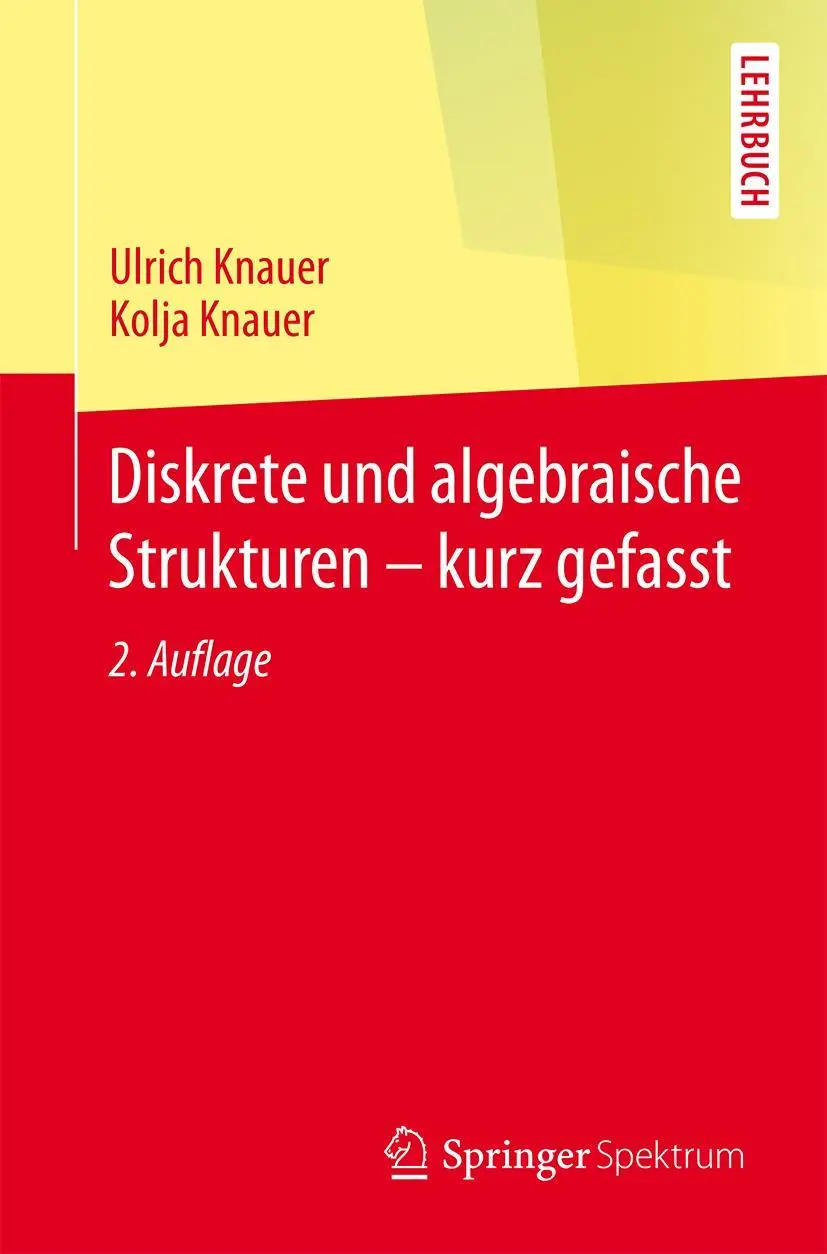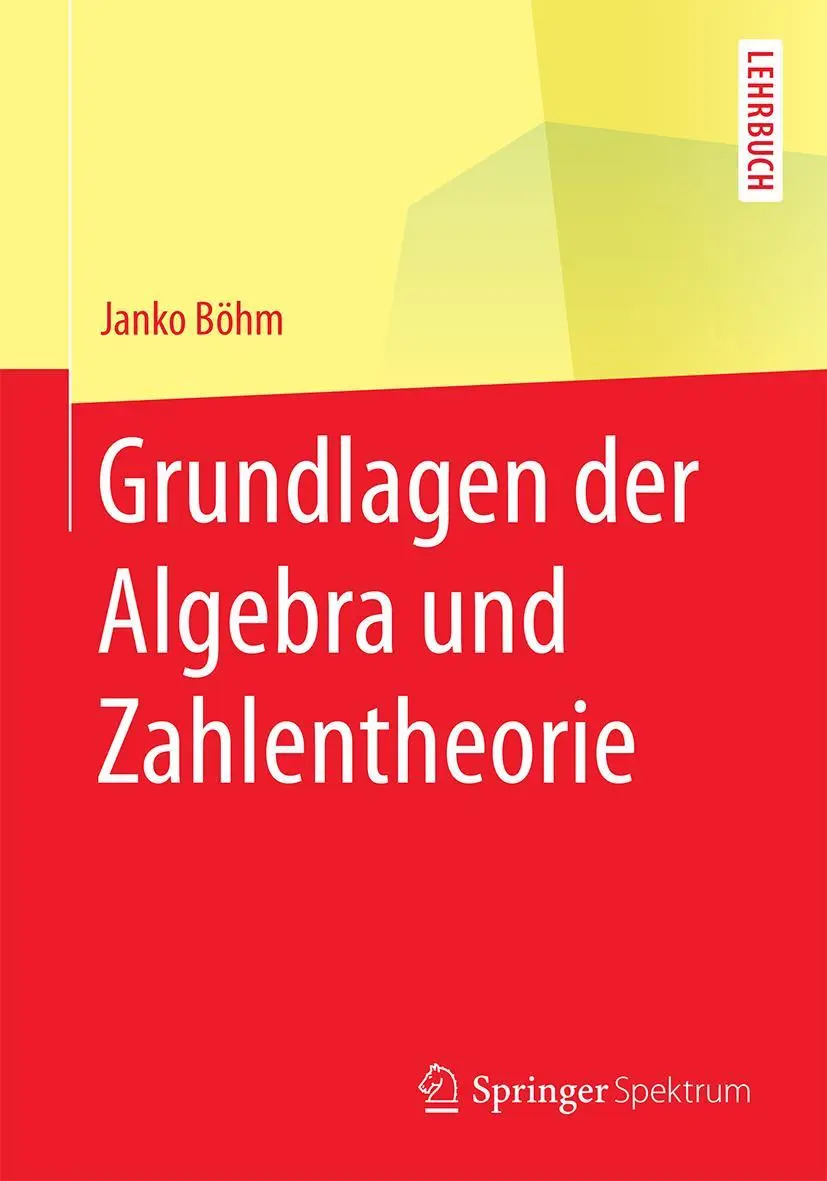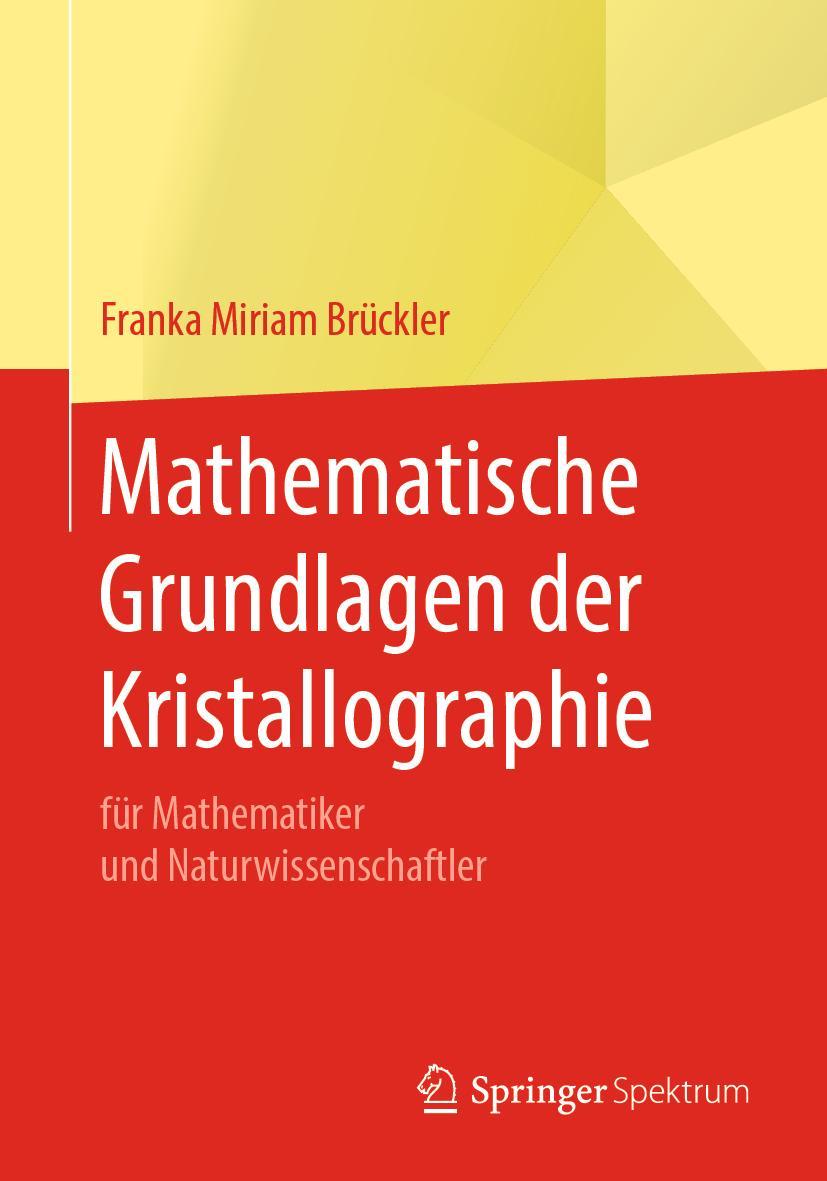Dekorationsartikel gehören nicht zum Leistungsumfang.
Sprache:
Englisch
51,95 €*
Versandkostenfrei per Post / DHL
Lieferzeit 1-2 Wochen
Kategorien:
Beschreibung
This book consists of three parts, rather different in level and purpose: The first part was originally written for quantum chemists. It describes the correspondence, due to Frobenius, between linear representations and charac ters. This is a fundamental result, of constant use in mathematics as well as in quantum chemistry or physics. I have tried to give proofs as elementary as possible, using only the definition of a group and the rudiments of linear algebra. The examples (Chapter 5) have been chosen from those useful to chemists. The second part is a course given in 1966 to second-year students of I'Ecoie Normale. It completes the first on the following points: (a) degrees of representations and integrality properties of characters (Chapter 6); (b) induced representations, theorems of Artin and Brauer, and applications (Chapters 7-11); (c) rationality questions (Chapters 12 and 13). The methods used are those of linear algebra (in a wider sense than in the first part): group algebras, modules, noncommutative tensor products, semisimple algebras. The third part is an introduction to Brauer theory: passage from characteristic 0 to characteristic p (and conversely). I have freely used the language of abelian categories (projective modules, Grothendieck groups), which is well suited to this sort of question. The principal results are: (a) The fact that the decomposition homomorphism is surjective: all irreducible representations in characteristic p can be lifted "virtually" (i.e., in a suitable Grothendieck group) to characteristic O.
This book consists of three parts, rather different in level and purpose: The first part was originally written for quantum chemists. It describes the correspondence, due to Frobenius, between linear representations and charac ters. This is a fundamental result, of constant use in mathematics as well as in quantum chemistry or physics. I have tried to give proofs as elementary as possible, using only the definition of a group and the rudiments of linear algebra. The examples (Chapter 5) have been chosen from those useful to chemists. The second part is a course given in 1966 to second-year students of I'Ecoie Normale. It completes the first on the following points: (a) degrees of representations and integrality properties of characters (Chapter 6); (b) induced representations, theorems of Artin and Brauer, and applications (Chapters 7-11); (c) rationality questions (Chapters 12 and 13). The methods used are those of linear algebra (in a wider sense than in the first part): group algebras, modules, noncommutative tensor products, semisimple algebras. The third part is an introduction to Brauer theory: passage from characteristic 0 to characteristic p (and conversely). I have freely used the language of abelian categories (projective modules, Grothendieck groups), which is well suited to this sort of question. The principal results are: (a) The fact that the decomposition homomorphism is surjective: all irreducible representations in characteristic p can be lifted "virtually" (i.e., in a suitable Grothendieck group) to characteristic O.
Zusammenfassung
This book consists of three parts, rather different in level and purpose. The first part was originally written for quantum chemists. It describes the correspondence, due to Frobenius, between linear representations and characters. The second part is a course given in 1966 to second-year students of l'Ecole Normale. The third part is an introduction to Brauer Theory.
Inhaltsverzeichnis
I Representations and Characters.- 1 Generalities on linear representations.- 2 Character theory.- 3 Subgroups, products, induced representations.- 4 Compact groups.- 5 Examples.- Bibliography: Part I.- II Representations in Characteristic Zero.- 6 The group algebra.- 7 Induced representations; Mackey's criterion.- 8 Examples of induced representations.- 9 Artin's theorem.- 10 A theorem of Brauer.- 11 Applications of Brauer's theorem.- 12 Rationality questions.- 13 Rationality questions: examples.- Bibliography: Part II.- III Introduction to Brauer Theory.- 14 The groups RK(G), Rk
(G), and Pk(G).- 15 The cde triangle.- 16 Theorems.- 17 Proofs.- 18 Modular characters.- 19 Application to Artin representations.- Index of notation.- Index of terminology.
(G), and Pk(G).- 15 The cde triangle.- 16 Theorems.- 17 Proofs.- 18 Modular characters.- 19 Application to Artin representations.- Index of notation.- Index of terminology.
Details
| Erscheinungsjahr: | 1977 |
|---|---|
| Fachbereich: | Arithmetik & Algebra |
| Genre: | Importe, Mathematik |
| Rubrik: | Naturwissenschaften & Technik |
| Medium: | Buch |
| Inhalt: |
x
172 S. |
| ISBN-13: | 9780387901909 |
| ISBN-10: | 0387901906 |
| Sprache: | Englisch |
| Einband: | Gebunden |
| Autor: | Serre, Jean-Pierre |
| Übersetzung: | Scott, Leonhard L. |
| Hersteller: |
Springer US
Springer New York |
| Verantwortliche Person für die EU: | Springer Verlag GmbH, Tiergartenstr. 17, D-69121 Heidelberg, juergen.hartmann@springer.com |
| Maße: | 241 x 160 x 17 mm |
| Von/Mit: | Jean-Pierre Serre |
| Erscheinungsdatum: | 01.09.1977 |
| Gewicht: | 0,471 kg |
Zusammenfassung
This book consists of three parts, rather different in level and purpose. The first part was originally written for quantum chemists. It describes the correspondence, due to Frobenius, between linear representations and characters. The second part is a course given in 1966 to second-year students of l'Ecole Normale. The third part is an introduction to Brauer Theory.
Inhaltsverzeichnis
I Representations and Characters.- 1 Generalities on linear representations.- 2 Character theory.- 3 Subgroups, products, induced representations.- 4 Compact groups.- 5 Examples.- Bibliography: Part I.- II Representations in Characteristic Zero.- 6 The group algebra.- 7 Induced representations; Mackey's criterion.- 8 Examples of induced representations.- 9 Artin's theorem.- 10 A theorem of Brauer.- 11 Applications of Brauer's theorem.- 12 Rationality questions.- 13 Rationality questions: examples.- Bibliography: Part II.- III Introduction to Brauer Theory.- 14 The groups RK(G), Rk
(G), and Pk(G).- 15 The cde triangle.- 16 Theorems.- 17 Proofs.- 18 Modular characters.- 19 Application to Artin representations.- Index of notation.- Index of terminology.
(G), and Pk(G).- 15 The cde triangle.- 16 Theorems.- 17 Proofs.- 18 Modular characters.- 19 Application to Artin representations.- Index of notation.- Index of terminology.
Details
| Erscheinungsjahr: | 1977 |
|---|---|
| Fachbereich: | Arithmetik & Algebra |
| Genre: | Importe, Mathematik |
| Rubrik: | Naturwissenschaften & Technik |
| Medium: | Buch |
| Inhalt: |
x
172 S. |
| ISBN-13: | 9780387901909 |
| ISBN-10: | 0387901906 |
| Sprache: | Englisch |
| Einband: | Gebunden |
| Autor: | Serre, Jean-Pierre |
| Übersetzung: | Scott, Leonhard L. |
| Hersteller: |
Springer US
Springer New York |
| Verantwortliche Person für die EU: | Springer Verlag GmbH, Tiergartenstr. 17, D-69121 Heidelberg, juergen.hartmann@springer.com |
| Maße: | 241 x 160 x 17 mm |
| Von/Mit: | Jean-Pierre Serre |
| Erscheinungsdatum: | 01.09.1977 |
| Gewicht: | 0,471 kg |
Sicherheitshinweis















